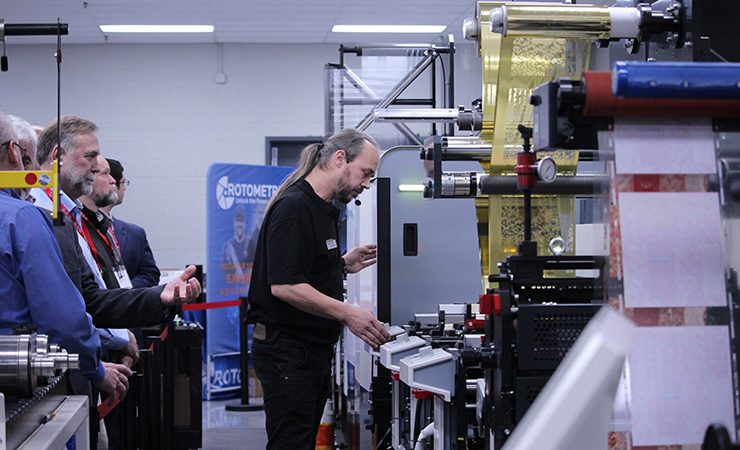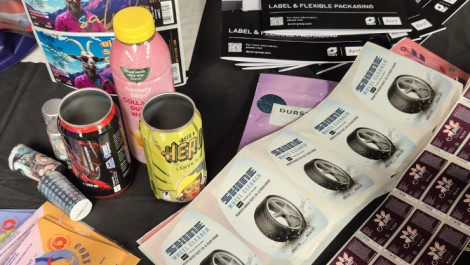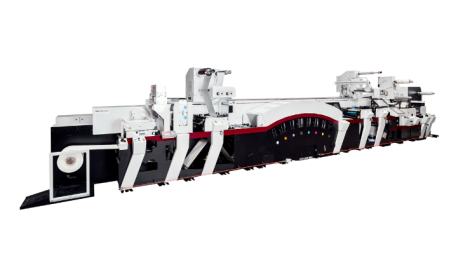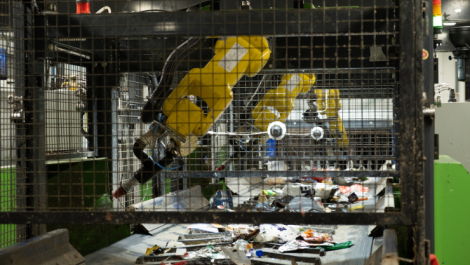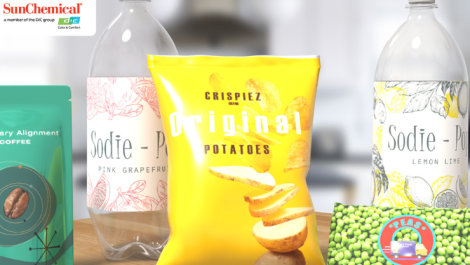As the appetite for hybrid printing continues to grow, almost all press vendors now offer a system to suit and new partnerships are being forged to take the technology to new heights.
Hybrid printing, in whichever way you choose to understand the term, continues to grow. From new systems entering the market, to installations and successful application of the technology, hybrid printing now has a firm foothold in the print industry.
Roland Stasiczek, product line management, digital label printing at Canon Production Printing, says, ‘Hybrid printing has been and still is one of the buzzwords in the label printing industry. It provides great benefits to many converters and applications. Therefore, we believe that hybrid printing will continue to play an important role in the market.’
Philip Easton, director, Domino Digital Printing Solutions, says, ‘It is only in the last two years that we have seen it becoming better understood and more readily embraced by label converters. This is probably the result of higher print quality from inkjet technology as well as greater reliability, but also because label printers who have experimented with straight digital, have now recognised where a hybrid solution fits and the efficiencies it can provide.’
Inline, near-line and full are all terms that are often used to define hybrid. Domino probably best epitomises this, with its N610i engine utilised in a number of ways by different partners to combine the best of digital and conventional printing. It is at the heart of the MPS EF Symjet, can be configured inline with finishing from the likes of AB Graphic, and is combined as part of a system with a Grafotronic DCL digital finishing line.
Who and why?
Given the variety of ways to go hybrid, as illustrated by Domino, those investing in these lines can come from almost any area of the print industry.
Marco Panzeri, digital-flexo hybrid product manager at Omet, sees customers as, ‘Normally expert medium/big groups or label shops that want to step ahead of their competitors. Also, many digital printers who want to optimise their production process; printing, finishing and converting inline with no second or third pass, by using one machine instead of two or three.’
Mr Stasiczek opines, ‘Converters interested in hybrid printing usually operate a few flexo presses already. They want to gain more flexibility and want to enhance production efficiency by adding digital technologies, mainly inkjet based to match existing productivity levels.’
Mr Easton says, ‘Most of the label printers investing in hybrid are medium or large size, and typically the investment is driven by the type of work being undertaken. Smaller printers tend to prefer the ultimate flexibility of a straight digital press with separate finishing. We see many different end-use applications suitable for hybrid printing, but common ones are for multiple SKU work, often for personal care labels. Also, simple short run die cut and varnished labels where productivity can be maintained without a complex finishing line set-up process.’
He sees shrink sleeves as a growing application for hybrid, as using flexo slip white for the background makes this digital production more cost effective. MPS similarly sees increasing use to print shrink sleeves.
UK-based Focus Label Machinery reports the majority of dFlex machines it has sold as producing industrial labels, but its versatility means it is also suitable for a wide range of applications in the manufacture of labels and flexible packaging.
Carlo Sammarco, sales director, packaging solutions at Screen Europe, says, ‘It very much is determined by the requirements of the end product and how easy it is to manufacture. A typical product suitable for hybrid is a label type that is produced week in, week out with the same embellishment and finishing requirements requiring the minimum of change over and processes.’
According to Bobst, hybrid printing’s position in the market is becoming more and more of a reality, especially now that customers are placing repeat orders for a second machine. Bobst has furthered its own position with the launch of Master DM5, a ‘full’ hybrid printing line combining Bobst’s flexo technology with the inkjet capability of Mouvent, Bobst’s joint venture in digital printing. Master DM5 has been developed with DigiFlexo automation to deliver the highest uptime and the maximum automation in flexo printing and converting, together with fast digitalised set-up of multi-process digital and analogue applications.
Screen’s Truepress Jet L350UV models feature design elements to assist synchronisation with flexo and finishing units, and reduce set-up time. The new SAI models feature centre registration, further improving the incorporation into an inline configuration. Screen has developed further interfaces and integrated its UV inkjet engine with the likes of Prati, Printum and Nilpeter.
A more recent partnership with Rotocontrol has shown another way for it to be utilised in a hybrid configuration. A printing speed of 60m/min is achievable, with standard and low migration inks reproducing a wide CMYK colour gamut in addition to white, orange, and Screen’s recently announced blue ink. It can handle a wide range of substrates, and has an open and accessible web path. An example configuration has an unwind unit, corona treater, web cleaner, first flexo station and UV dryer, the UV inkjet engine, a second flexo station with UV dryer, UV lamination or cold foil, full/semi-rotary combination die station with matrix stripping, and rewind station.
The capability to provide conventional finishing inline is a big plus for hybrid printing, says Mr Panzeri. ‘Plus,’ he says, ‘the flexo stations enable primers and special varnish applications, Pantone or metallised colour printing.
‘When solid areas are required – white for example – it is more convenient to use flexo printing, since the cost of the ink is much cheaper. At the end of the day everyone is free to choose the most affordable way to produce by combining all the benefits of the two technologies.’
Thomas Schweizer, head of product management at Gallus, says, ‘A hybrid press with flexo/screen and inkjet opens up many possibilities for narrow web applications: a label press with digital for short runs and excellent inkjet print quality, flexo for metallic inks and cold foil plus rotary screen for opaque white and other colours – all these possibilities in one press like the Gallus Labelfire make single-pass printing and converting possible to a very good total cost per label.’
Labelfire’s latest updates see the hybrid press able to run at up to 70m/min, low migration capability added, and the integration of the digital embellishment unit (DEU) for high-quality digital embellishments. In addition, the variety of applications that can be produced is widening, from self-adhesive labels, to folding cartons, flexible packaging applications, and tube laminates. These can be printed, embellished, and die-cut roll-to-roll in a single pass.
‘Today’s label business is demanding flexibility for label printers and converters in any possible way,’ continues Mr Schweizer. ‘Whether adding digital to a conventional or conventional to a digital press, it doesn`t matter for us. The most relevant thing is to meet the customer`s demand and to give them the highest flexibility as possible.’
The latest Omet XJet, powered by Durst, can print at up to 100m/min, with available digital printing widths of 330mm, 420mm and 510mm. The machine has fully automatic register and control, with further developments allowing the range of applications to be expanded.
Focus Label Machinery has added dPack to its established dFlex hybrid press. dFlex has a CMYK+W inkjet system at production speeds of 20-70m/min. Combined with a flexo print station and other options, labels can be printed, coated and converted inline. dPack sees the machine speed upped to a maximum 120m/min, with the capability to handle film and packaging substrates supported by roll-to-roll servo technology, and the choice of UV/LED curing.
Canon has likewise expanded the capability of LabelStream, including improving the overall efficiency and usability of the press. Job set-up and management, for example, has been improved.
‘In addition, we now can provide greater registration accuracy and faster sync between flexo and digital, calling for a minimum of operator interference in order to drive uptime and high quality output whilst reducing waste,’ says Mr Stasiczek.
Next-generation
Screen sees future developments in hybrid configurations as being to replace embellishments done with conventional rotary/flatbed screen, flexo spot varnish, and cold foil units, with inkjet modules. ‘This reduces cost and time in both producing tooling and making the process more dynamic, reducing minimum quantities and introducing versioning and variable data embellishments,’ opines Mr Sammarco.
Mr Panzeri says, ‘Higher quality, faster production speed and wider printing widths are the reasons of the big steps ahead, and have cleared the way for hybrid into the real market.
‘We expect 2020 being the year of the consecration of hybrid and 2021 when installations start to grow.’
This will be further realised by new systems combining inkjet and toner technologies with analogue processes. Focus has seen an increase in bespoke requests as printers compete to offer more embellishments and added value so need to expand their capabilities, and expects the quality and complexity to continue to progress. MPS expects sales to grow, including for wider machines such as its 430mm-wide EF Symjet that features the Domino N617 inkjet module. The market will also be driven by ink prices coming down and a higher breakeven point reached.
Mr Easton concludes, ‘We have seen demand for hybrid presses increase significantly, and with an increasing number of label converters now understanding the real benefits, we can only see further high market growth.’

